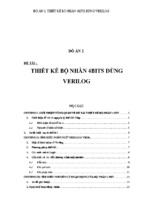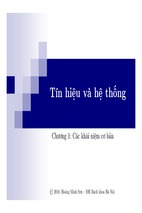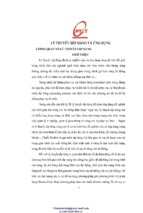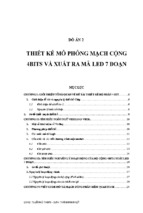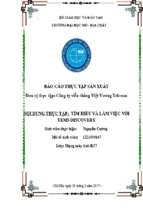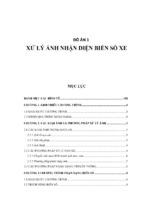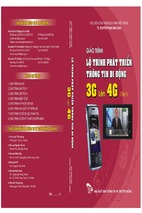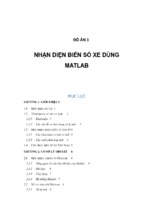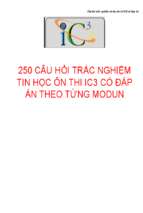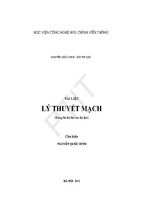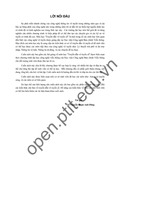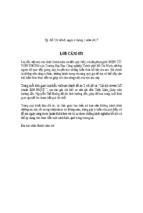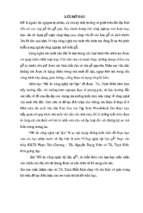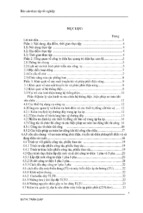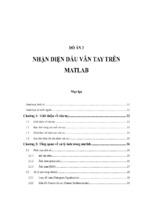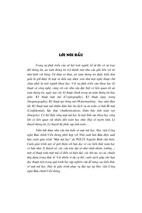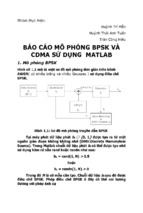Propagation Handbook for Wireless Communication System Design
Propagation
Handbook
for Wireless
Communication
System Design
Robert K. Crane
CRC PR E S S
Boca Raton London New York Washington, D.C.
©2003 CRC Press LLC
0820_book Page iv Friday, May 2, 2003 10:34 AM
Library of Congress Cataloging-in-Publication Data
Crane, Robert K., 1935Propagation handbook for wireless communication system design / Robert K. Crane.
p. cm. — (Electrical engineering and applied signal processing series; 13)
Includes bibliographical references and index.
ISBN 0-8493-0820-8 (alk. paper)
1. Radio wave propagation—Mathematical models—Handbooks, manuals, etc. 2.
Wireless communication systems—Handbooks, manuals, etc. I. Title. II. Series.
TK6552.C73 2003
621.384'11—dc21
2003043556
This book contains information obtained from authentic and highly regarded sources. Reprinted material
is quoted with permission, and sources are indicated. A wide variety of references are listed. Reasonable
efforts have been made to publish reliable data and information, but the author and the publisher cannot
assume responsibility for the validity of all materials or for the consequences of their use.
Neither this book nor any part may be reproduced or transmitted in any form or by any means, electronic
or mechanical, including photocopying, microfilming, and recording, or by any information storage or
retrieval system, without prior permission in writing from the publisher.
The consent of CRC Press LLC does not extend to copying for general distribution, for promotion, for
creating new works, or for resale. Specific permission must be obtained in writing from CRC Press LLC
for such copying.
Direct all inquiries to CRC Press LLC, 2000 N.W. Corporate Blvd., Boca Raton, Florida 33431.
Trademark Notice: Product or corporate names may be trademarks or registered trademarks, and are
used only for identification and explanation, without intent to infringe.
Visit the CRC Press Web site at www.crcpress.com
© 2003 by CRC Press LLC
No claim to original U.S. Government works
International Standard Book Number 0-8493-0820-8
Library of Congress Card Number 2003043556
Printed in the United States of America 1 2 3 4 5 6 7 8 9 0
Printed on acid-free paper
©2003 CRC Press LLC
0820_book Page v Friday, May 2, 2003 10:34 AM
Preface
Wireless means different things to different people. For this book, it refers
to the radio systems that provide point-to-point, point-to-multipoint, and
Earth-space communications over transmission links that propagate outside
buildings through the lower atmosphere. Wireless systems are being built
that provide data transmission between computers and other devices on
one’s own desk. These are part of the wireless world but not the part where,
except for interference perhaps, the atmosphere has any influence. The intent
of this book is to provide a description of the physical phenomena that can
affect propagation through the atmosphere, present sample measurements
and statistics, and provide models that system designers can use to calculate
their link budgets and estimate the limitations the atmosphere may place on
their design.
In the late 1980s, the National Aeronautics and Space Administration
(NASA) embarked on an observation program to provide propagation data
to aid in the design of the next generation satellite communication systems,
employing small and very small aperture antennas at the ground terminals.
The Advanced Communication Technology Satellite (ACTS) was launched
in 1993 and the ACTS propagation experiment began collecting calibrated
data on January 1, 1994. The author was chair of the science panel for this
experiment. The seven-site data collection phase of the experiment lasted
for 5 years. The experiment was designed to collect data in climate regions
that had not been previously explored and, at the same time, collect additional data at two locations that had been previously studied. An interim
report of this experiment was published in 1997 (Proc. IEEE, June 1997), but
no final reporting has been attempted. Many of the sample measurements
presented in this book came from the ACTS propagation experiment. Some
results from the entire 5-year observation set are presented. As a result of
analyses of the ACTS data, several new propagation models were developed,
which are explained in detail in this book.
The propagation models presented in this book are useful for long and
short terrestrial paths and Earth-space paths. They are not specific to a small
band of frequencies, but will be useful as systems are designed to operate
at higher and higher frequencies. Propagation modeling should not be
viewed as a mature science. Improved models will become available as we
move to the higher frequencies or to new climates. An attempt has been
©2003 CRC Press LLC
0820_Frame_C00.fm Page vi Friday, May 9, 2003 12:25 PM
made to discuss the physical bases of each model and occasionally to indicate
directions for improvement. Some of the measurements and modeling results
presented in this book come from earlier unpublished work by the author.
They are included to expand on and support some of the more recent results.
Chapter 5 presents a new model for the prediction of rain-rate statistics
and a revision and improvement of the author’s two-component model for
the prediction of rain-attenuation statistics. The improved models predict
rain-rate and attenuation statistics for monthly, seasonal, and annual time
periods. The models also provide a prediction of the expected yearly variations of measured distributions about the predictions. Empirical distributions from the ACTS propagation experiment for annual, seasonal, and
monthly time periods are presented to confirm the applicability of the new
models. The use of these models to predict space diversity improvement or
worst-month statistics has not changed from that given in an earlier monograph and is not considered here.
This book focuses on propagation effects that can affect the availability
of a communication channel. It does not consider interference problems,
although they in turn may affect availability. The propagation models presented in the book can be coded for use in a spreadsheet or in a stand-alone
program that runs on a personal computer. No programs are included with
the book. A list of symbols is included at the end of each chapter. Some of
the symbols have different meanings in different sections.
The author wishes to acknowledge the patience and support of his wife
especially during the time taken to prepare this book. The author wishes to
acknowledge the support provided by NASA, NSF, and the U.S. Army and
Air Force with his research over the past four decades.
Robert K. Crane
Grantham, New Hampshire
©2003 CRC Press LLC
0820_book Page vii Friday, May 2, 2003 10:34 AM
Contents
Chapter 1 Propagation phenomena affecting wireless systems
1.1 Types of systems
1.2 Design criteria
1.3 Antenna considerations
1.3.1 Transmission loss
1.3.2 Antenna beamwidth
1.4 Propagation effects
1.4.1 Path attenuation
1.4.1.1 Atmospheric gases
1.4.1.2 Clouds and fog
1.4.1.3 Rain
1.4.1.4 Water layer
1.4.1.5 Building material
1.4.1.6 Vegetation
1.4.1.7 Obstacles
1.4.2 Refraction
1.4.2.1 Ray tracing
1.4.2.2 Ducting
1.4.2.3 Effective Earth’s radius
1.4.2.4 Tropospheric scatter
1.4.2.5 Scintillation
1.4.3 Receiver noise
1.5 Propagation models
1.6 Model verification
1.7 Statistics and risk
1.7.1 Stationarity
1.7.2 Variability model distribution
1.7.2.1 Lognormal model
1.7.2.2 Normal distribution model
1.7.2.3 Gamma distribution model
1.7.2.4 Weibull distribution model
1.7.2.5 Model selection
1.7.3 Risk
1.8 List of symbols
References
©2003 CRC Press LLC
0820_book Page viii Friday, May 2, 2003 10:34 AM
Chapter 2 Propagation fundamentals
2.1 Maxwell’s equations
2.2 Plane waves
2.3 Spherical waves
2.4 Reflection and refraction
2.5 Geometrical optics
2.6 Ray tracing
2.7 Scalar diffraction theory
2.8 Geometrical theory of diffraction
2.9 List of symbols
References
Chapter 3 Absorption
3.1 Molecular absorption
3.1.1 Complex index of refraction
3.1.1.1 Water vapor
3.1.1.2 Molecular oxygen
3.1.2 Approximate models
3.1.2.1 ITU-R model
3.1.2.2 Regression model
3.2 Absorption on a slant path
3.2.1 Attenuation
3.2.2 Brightness temperature
3.2.3 Approximate models
3.2.3.1 ITU-R model
3.2.3.2 Regression model
3.2.3.3 ACTS model
3.2.4 Specific attenuation profiles
3.2.4.1 June 4, 1996
3.2.4.2 June 5, 1996
3.2.4.3 June 6, 1996
3.3 ACTS statistics
3.3.1 Twice-daily sky brightness temperature
3.3.1.1 Norman, OK
3.3.1.2 Fairbanks, AK
3.3.1.3 Vancouver, British Columbia
3.3.1.4 Greeley, CO
3.3.1.5 Tampa, FL
3.3.1.6 White Sands, NM
3.3.1.7 Reston, VA
3.3.2 Gaseous absorption distributions
3.3.2.1 Norman, OK
3.3.2.2 Fairbanks, AK
3.3.2.3 Vancouver, British Columbia
3.3.2.4 Greeley, CO
3.3.2.5 Tampa, FL
©2003 CRC Press LLC
0820_book Page ix Friday, May 2, 2003 10:34 AM
3.3.2.6 White Sands, NM
3.3.2.7 Reston, VA
3.4 List of symbols
References
Chapter 4 Refraction
4.1 Ray bending
4.1.1 Bending and focusing
4.1.2 Elevation angle error
4.1.3 Trapping or ducting
4.2 Path delay
4.2.1 Range error
4.2.2 Multipath
4.3 Scintillation
4.3.1 ACTS observations
4.3.2 Low elevation angle observations
4.3.3 Standard deviation prediction models
4.4 List of symbols
References
Chapter 5 Attenuation by clouds and rain
5.1 Rain
5.2 Rain attenuation
5.3 Seasonal rain attenuation statistics
5.3.1 Monthly statistics
5.3.2 Worst-month statistics
5.4 Fade duration
5.5 Fade rate
5.6 Rain attenuation models
5.6.1 Rain rate models
5.6.1.1 Crane local model
5.6.1.2 New ITU-R model
5.6.1.3 Comparison to ACTS observations
5.6.2 Two-component path attenuation model
5.6.3 Application of the models
5.7 List of symbols
References
Appendix 5.1
Appendix 5.2
References
©2003 CRC Press LLC
0820_book Page 1 Friday, May 2, 2003 10:34 AM
chapter one
Propagation phenomena
affecting wireless systems
1.1 Types of systems
The phrase wireless system refers to any system that uses electromagnetic
waves to transfer information from one location to another without using
wires. The applications can include transmitting voice between hand-held
walkie-talkies, transmitting data from a satellite to ground or from one
computer to another within a room, or using radar to sense rain. This handbook considers only the propagation of electromagnetic waves in the microwave through millimeter wave radio frequency spectrum, 0.3 through 300
gigaHertz (GHz). These frequencies lie in the ultra high (UHF: 0.3 to 3 GHz),
super high (SHF: 3 to 30 GHz), and extra high (EHF: 30 to 300 GHz) communication bands. Frequency bands are often referenced by their radar band
designations as shown in Table 1.1. Actual band identification is often less
precise than that indicated in the table. For fixed satellite communication
services, Ka band refers to the 20- to 30-GHz frequency range.
This handbook focuses on transmission in and through the lower atmosphere, the region of the atmosphere where weather phenomena occur. The
properties of the lower atmosphere are highly variable and change hourly,
daily, monthly, and yearly. Their effects on radio wave propagation produce
random variations in the amplitude, phase, frequency, polarization, coherence bandwidth, delay spread, and propagation direction of the electromagnetic waves. Knowledge of the statistics of one or more of these effects may
be necessary for system design.
A wireless system of considerable interest is the cellular system. For this
system, the domain of interest is subdivided into a number of smaller cells
with transmitters and receivers that handle communications within each cell
or complex of cells. The organization and structure of a cellular system are
not considered in this handbook, but the statistics of the properties of a
transmission channel between a transmitter and receiver in a cell and the
joint statistics for multiple transmission paths within a cell or between cells
©2003 CRC Press LLC
0820_book Page 2 Friday, May 2, 2003 10:34 AM
Table 1.1 Frequency Band Nomenclatures
Radar band
UHF
L
S
C
X
Ku
K
Ka
V
W
Mm
Lowest frequency
(GHz)
Highest frequency
(GHz)
Communication
band
0.3
1
2
4
8
12
18
27
40
75
110
1
2
4
8
12
18
27
40
75
110
300
UHF
UHF
UHF/SHF
SHF
SHF
SHF
SHF
SHF/EHF
EHF
EHF
EHF
are. The context is the statistics for a single path and the joint statistics for
multiple paths.
Much propagation data has been collected for use in the design of fixed
service satellite and terrestrial communication systems. Fixed service means
a communication system employing fixed terminals on the Earth’s surface.
For satellite systems, the satellite can be in geostationary orbit or in any other
orbit that produces a variation in the pointing direction from the fixed
ground station to the satellite. Considerable data has also been collected for
cellular systems and mobile satellite systems. Published annual attenuation
statistics are available from many locations in Europe and North America.
Some data are available from other locations too. Study Group 3 of the
Radiocommunication Study Groups of the International Telecommunications Union (ITU-R) provides data banks for model development and verification and for use in system design.1 The empirical statistics in the data
banks for fixed service systems are generally for observations of limited
duration, that is, from records that span only 1 to 5 years. The data collected
for mobile service systems are more limited. Models that summarize the data
in the data banks will provide a better estimate of the expected statistics for
a particular path than the empirical results from measurements of limited
duration on that path.
Point-to-multipoint fixed line-of-sight terrestrial systems are now in
development, using frequencies in the EHF band. Long-duration empirical
statistics are not available at frequencies above 30 GHz for single paths or
joint statistics for two or more paths originating from a single point. Physical
propagation models are required to extend predictions to locations or conditions where adequate observations are not available. These models can be
validated using data from available data banks. The extrapolation of empirical curve-fitting or regression models is not recommended.
This handbook describes physical propagation models for the prediction
of statistics for a wide variety of communication, broadcast, navigation,
radar, and remote sensing systems operating in the UHF, SHF, and EHF
©2003 CRC Press LLC
0820_book Page 3 Friday, May 2, 2003 10:34 AM
communication frequency bands. The models are developed from meteorological data and depend on the availability of climate data. The models were
validated over limited ranges by comparing with available data. Error statistics are presented for each model. Where possible, the expected interannual variability of the predictions is presented to establish the risk associated
with a prediction. The expected prediction uncertainty is used when comparing predictions to empirical statistics.
1.2 Design criteria
Communication systems are designed to specific availability requirements.
For the simplest transmission path between a single transmitting antenna
and a single receiving antenna, the amplitude of the received signal relative
to the unwanted noise in the receiver may be the statistic of interest. If the
received signal level is too low, the signal may not be detected in the noise;
if too high, nonlinear receiver effects may distort the signal and render it
unintelligible. The error rate for a digital communication link depends on
the signal-to-noise ratio as well as other factors. The statistics of the signal-to-noise ratio are therefore important. The signal-to-noise ratio depends
on the receiver design, the gains and losses of the transmitting and receiving
antennas, the modulation and coding of the transmitted signal, the transmitted signal power, the path loss between the antennas, and the possibility
of interference from other transmitters. Availability is the fraction of time
that the communication link is available for use with a signal-to-noise that
exceeds the design specification for a given error performance. The outage
time is the fraction of time for which the desired error performance is not
obtained.
The atmosphere may affect the performances of the antennas and transmission path (Figure 1.1). At frequencies above 10 GHz and depending on
antenna design, rainwater or wet snow on an antenna may reduce the magnitude of the received signal (increase the path loss). The geometric spreading of the electromagnetic energy transmitted by the antenna produces a
change in signal strength with distance along the path to the receiving
antenna. Water vapor and oxygen in the atmosphere may cause signal
absorption on the path, producing a loss or attenuation relative to the geometric spreading. Scattering by clouds and rain produce an excess attenuation relative to the geometrical spreading and gaseous absorption. For a
particular path, the total attenuation, gaseous absorption plus excess attenuation, changes with time as clouds and rain drift across the path and
temperature and humidity change along the path. The statistics of changing
path loss may therefore be important in the design of a system. Depending
on carrier frequency and path length through the atmosphere, the total
attenuation statistics may constrain system design.
Time series of attenuation observations at two Ka-band frequencies on
an Earth space path for a single day with rain is presented in Figure 1.2. The
beacon transmitters were on the NASA ACTS. The receiver was located in
©2003 CRC Press LLC
0820_book Page 4 Friday, May 2, 2003 10:34 AM
Affected by the Atmosphere
Source
Transmitter
Antenna
Path
User
Receiver
Antenna
Figure 1.1 Block diagram for a single path.
Atten 27 GHz Beacon
Atten 20 GHz Beacon
35
ACTS Propagation Experiment
49.1 deg Elevation Angle
Total Attenuation (dB)
30
25
20
15
10
5
0
0
1
2
3
4
5
6
7
8
9 10 11 12 13 14 15 16 17 18 19 20 21 22 23 0
Time (h UT)
Figure 1.2 Total attenuation time series for Norman, OK, on July 25, 1994.
Norman, OK. The data were collected as a part of the ACTS propagation
experiment.2 The measurements are 1-min averages of the received signal
plus receiver noise. The dynamic range of the system set the maximum
observable total attenuation to about 30 decibels (dB). When only receiver
noise was present, the total attenuation values were set to 35 dB. For this
day, the attenuation produced by gaseous absorption during clear-sky conditions, before 3:30 universal or Greenwich Mean Time (UT) and after 18:30
UT, was near 1 dB at 20.2 GHz and lower, at about 0.6 dB, at 27.5 GHz.
The time series of rain rate observed at a collocated rain gauge is presented in Figure 1.3. In this figure, a second estimate is presented for the
1-min average rain rate to extend the dynamic range to lower rates. Total
attenuation values at 20.2 GHz exceeded 10 dB during the two rain events,
indicated by rain rates in excess of a few millimeters/hour (mm/h). The
total attenuation observed on the path did not vary in direct proportion to
the rain rate observed at a point a few feet from the receiving antenna
aperture. The lower attenuation events were due to clouds along the path.
The event just after 14:00 UT may have had some light rain as well as clouds
on the path.
The occurrences of attenuation events such as those shown in Figure 1.2
are random and must be treated statistically. Figure 1.4 presents empirical
©2003 CRC Press LLC
0820_book Page 5 Friday, May 2, 2003 10:34 AM
Rain Rate
Rain Rate 2nd Estimate
60
ACTS Propagation Experiment
Collocated Rain Gauge
Norman, Oklahoma
Rain Rate (mm/h)
50
40
30
20
10
0
0
1
2
3
4
5
6
7
8
9 10 11 12 13 14 15 16 17 18 19 20 21 22 23 0
Time (h UT)
Figure 1.3 Rain rate time series for Norman, OK, on July 25, 1994.
Probability of Exceeding the Total
Attenuation (%)
100
Norman, Oklahoma
20.2 GHz Frequency
10
1994
1995
1996
1
1997
1998
0.1
0.01
0.001
-5
0
5
10
15
20
25
30
Total Attenuation (dB)
Figure 1.4 Empirical annual distribution functions for total attenuation at 20.2 GHz
for Norman, OK.
annual probability distributions for total attenuation observed over a 5-year
period at the Norman, OK, site.3 The empirical distribution functions (EDFs)
give the probability of exceeding the attenuation indicated on the abscissa
for each year of observation. The probabilities are expressed in percentage
of a year. The distributions were compiled from continuous observations of
1-sec average signal levels. If the system design could maintain the desired
error rate with a total attenuation of 5 dB, outages would occur on this path
between 1300 and 2300 min/year, depending on the year. For this path, at
a higher frequency of 27.5 GHz and the same total attenuation threshold,
the outages would range from 3200 to 5200 min/year.
The several atmospheric phenomena that affect this path have different
seasonal dependencies. Figure 1.5 presents the average annual EDF for the
5-year period together with the 5-year average EDFs for each season. The
probability of exceeding a specified attenuation is higher in the summer than
©2003 CRC Press LLC
0820_book Page 6 Friday, May 2, 2003 10:34 AM
Probability of Exceeding the Total
Attenuation (%)
100
Norman, Oklahoma
20.2 GHz Frequency
49.1 deg Elevation Angle
5-year Average
10
Annual
Winter
Spring
Summer
Fall
1
0.1
0.01
0.001
-5
0
5
10
15
20
25
30
Total Attenuation (dB)
Figure 1.5 Empirical seasonal distribution functions for total attenuation at 20.2 GHz
for Norman, OK.
in the winter for the Oklahoma site. Gaseous absorption by oxygen and
water vapor is present all the time. In the summer, with higher temperatures,
the increased water vapor produces measurable attenuation as much as 80%
of the time. Clouds affected the path for from 2% to perhaps 20% of the
average year. At lower percentages, attenuation by rain on the path and on
the antenna reflector and feed produces attenuation values ranging from a
few decibels to above 30 dB and could cause a complete loss of signal.
Seasonal variations in attenuation statistics indicate that the processes
that produce the attenuation are not stationary over periods shorter than a
year. These processes can be considered cyclostationary. Empirical annual
statistics therefore have to be collected from measurements made over a full
year or an integral number of years. Statistics for a particular month can be
collected for a number of years, but only during that month of the year.
The attenuation statistics presented in Figure 1.4 and Figure 1.5 can arise
from attenuation events as short as 1 sec or as long as several hours. If all
the fades were of very short duration, say 1 sec or less, they may not be
significant. If they were much longer, say 1 h or more, they may disrupt
communication. A second statistic of interest for system design is the fade
duration distribution. Figure 1.6 presents the fade duration distribution for
total attenuation events of 5 dB or higher that occurred during the 5-year
measurement program. A large number of very short fades are evident, but
a significant number of fades had durations longer than 1 min and a few
were longer than 1 h.
The yearly variations in the EDFs shown in Figure 1.4 may also be
important for system design. The performance specifications may require a
design that is compromised only once in a specified number of years. The
risk to be assigned to a particular design threshold must then be assessed.
©2003 CRC Press LLC
0820_book Page 7 Friday, May 2, 2003 10:34 AM
10000
Norman, Oklahoma
20.2 GHz Frequency
49.1 deg Elevation Angle
1994
Number of Fades
1000
1995
1996
100
1997
1998
10
1
10
100
1000
10000
Fade Duration (sec)
Figure 1.6 Empirical annual distribution functions for fade duration at 20.2 GHz for
Norman, OK.
Design to the median expected performance of a link would be successful
only for half the years the system is in operation.
1.3 Antenna considerations
Wireless systems use antennas to transmit and receive electromagnetic
waves. The antennas may be wire antennas, aperture antennas, arrays of
wire or aperture antennas, or reflector antennas with the energy fed to the
reflector by a combination of antennas. Often an antenna is covered or
enclosed by a radome to protect it from the weather. Depending on the
antenna and radome design, some antennas are more susceptible than others
to a loss of gain due to rainwater or wet snow on the antenna or radome,
or both. The ground terminal antenna used to collect the data presented in
Figure 1.2 to Figure 1.6 could suffer from a signal reduction of over 24 dB
due to wet snow on the reflector.4 Snow events were censored from the data
prior to compiling the statistics presented in the figures. Rainwater on the
antenna reflector and radome over the antenna feed could produce an additional 5 dB or more loss at high rain rates.5 The EDFs presented in these
figures were not corrected for the effects of rainwater on the antenna.
1.3.1
Transmission loss
The antennas at each end of a path direct the electromagnetic energy toward
each other. The equation for free space propagation between two antennas
is given by the Friis transmission equation:6
PR GT GR λ2
g , g
,
P =
2 T (θ φ ) R (θ ′ φ ′ )
T ( 4 πR)
©2003 CRC Press LLC
(1.1)
0820_book Page 8 Friday, May 2, 2003 10:34 AM
z
direction of propagation
φ
θ
y
x
pointing direction of antenna
Figure 1.7 Spherical coordinate system for antenna gain analysis.
where PT and PR are the transmitted, T, and received, R, powers, respectively;
GT and GR the transmitting and receiving antenna gains, respectively; λ the
wavelength of the electromagnetic wave, R the distance between the antennas, and gT(θ,φ) and gR(θ,φ) the relative directive gains at spherical angles
(θ, φ) measured from the pointing direction of each antenna (Figure 1.7) with
a convenient reference direction for φ. The transmission loss equation is often
expressed in decibels:
G G λ2
PR = PT T R 2 gT (θ, φ) g R (θ ′ , φ ′)
( 4 πR)
P G g G g λ2
PR = 10Log10 ( PR ) = 10Log10 T T T R2 R
(4πR)
PR = PT + G T + g T + GR + gR + 20Log10 (λ ) − 20Log10 ( R) − 22
(1.2)
L = PT − PR = −(G T + g T + GR + gR + 20Log10 (λ ) − 20Log10 ( R) − 22)
LB = −(20Log10 (λ ) − 20Log10 ( R) − 22)
where L is the transmission loss, LB the basic transmission loss; the powers,
P, are in decibels, the antenna gains, G, in decibels relative to an isotropic
antenna (dBi), and the range (or distance) and wavelength are in the same
units of length. The basic transmission loss is just the free space loss, that is,
the loss between two isotropic antennas. If the unit of power is a watt, the
power is in decibel watt (dBW). In many applications, it is convenient to
mix some of the units. For antennas pointed toward each other to maximize
their gains, gT(θ,φ) = 1 and gR(θ,φ) = 1; for λ = c/f with frequency, f, in gigaHertz
and c ≈ 3 × 108 m/s the speed of light. For range in kilometers and for
received power expressed in milliwatts and transmitter power in watts, the
transmission equation becomes:
©2003 CRC Press LLC
0820_book Page 9 Friday, May 2, 2003 10:34 AM
PR = PT + G T + GR − 20Log10 ( f ) − 20Log10 ( R) − 62.4 dBm
(1.3)
The directive gain of an antenna, D, is:
eD(θ, φ) = Gg(θ, φ)
(1.4)
where e is the antenna efficiency. The directive gain of an antenna describes
the ability of the antenna to concentrate the energy radiated by the antenna
in a specified direction. It is the ratio of the energy propagating in the
specified direction to the energy that would have been transmitted in that
direction by an isotropic antenna.7 For an isotropic antenna, the energy
transmitted per unit solid angle is PT/4π. The radiated power flux density
(the magnitude of the time average Poynting vector, the radiated power per
unit area per unit solid angle) at a distance R from an isotropic antenna is
S = PT / 4πR2. The power collected by a receiving antenna is the power flux
density times the effective area of the receiving antenna normal to the direction of propagation, Ae. The gain of a receiving antenna is related to Ae by
GR = 4π/λ2 Ae . The free space loss between the two antennas is then given
by λ2/(4πR)2 . The gain of an antenna differs from the directive gain for that
antenna by accounting for losses in the antenna.
The transmission equation considers only the geometric spreading of
the electromagnetic energy in the propagating wave, the far-field directive
gain of each antenna, and the antenna efficiency. It is for the idealized
situation, with no adjustment for the possible polarization mismatch,
weather-induced radome or reflector loss, or attenuation along the path
through the atmosphere. It is also for use when only one propagation path
exists between the antennas. A more complete representation of the transmission loss identifies the factors that can be affected by the atmosphere
(Figure 1.8).
− 0.1 A T + A R + ∫ αdr
PR GT GR λ2
0
,
,
⋅
=
g
θ
φ
g
θ
φ
m
10
′
′
(
)
(
)
R
P
2 T
T ( 4 πR)
R
(1.5)
where AR and AT are the losses (dB) due to environmental effects on the
antennas, m the signal reduction due to a polarization mismatch between the
receiving antenna and the incoming electromagnetic wave, and α the specific
attenuation (dB/km for r in km) due to atmospheric processes along the
propagation path. The transmitter power may be measured at some convenient location along the transmission line or wave guide connecting the
transmitter and antenna. The antenna gain is then calculated relative to that
reference point (or plane). The attenuation produced by the atmosphere is a
loss in addition to the geometrical spreading loss. A mismatch can occur when
the polarization of the incoming wave differs from the polarization expected
for the antenna design. The equation for basic transmission loss is for the
©2003 CRC Press LLC
0820_book Page 10 Friday, May 2, 2003 10:34 AM
Reference Plane
Affected by the Atmosphere
Source
User
Transmitter
Receiver
Ideal
Antenna
Ideal
Antenna
Environmental
Effects on
Antenna
Path
Environmental
Effects on
Antenna
Figure 1.8 Block diagram showing the reference plane for propagation loss calculations.
path between the antennas. It includes any attenuation due to the propagation medium, polarization mismatch, and any antenna losses not included
in the antenna gains.
In some applications, the receiving antenna may collect energy from
more than one path. The antenna will combine coherently the signals from
the several paths incident on it. In this case, the amplitude and relative phase
of each signal are important because it is the phasor sum of the signals that
the antenna will present to the receiver. The amplitude and phase of the
spherically spreading far-field electromagnetic wave radiated by an antenna
are given by:
E = E0
S=
e − j ( kR−ωt )
4 πR
E0 E0*
EE *
=
2 η0 32 η0 π 2 R 2
(1.6)
E0 = 8πη0 PT GT gT
where j = −1 , k = 2π/λ = 2πf/c, ω = 2πf, t is time, f the frequency, c the
speed of light, η0 the impedance of free space, and E* is the complex conjugate
of E. For two paths operating at the same frequency, the received power is
then given by:
E = E1 + E2 =
E=
PR =
©2003 CRC Press LLC
− j kR
− j kR
e jωt
e ( 1)
e ( 2)
E01
+ E02
R1
4π
R2
− j kR
− j kR
8πη0 e jωt
e ( 1)
e ( 2)
P
G
g
+
P
G
g
T1 T1 T1 R
T2 T2 T2
R2
4π
1
λ2GR
( 4 π)2
PT 1GT 1 gT 1 g R1
− j kR
− j kR
e ( 1)
e ( 2)
+ PT 2GT 2 gT 2 g R 2
R1
R2
(1.7)
2
0820_book Page 11 Friday, May 2, 2003 10:34 AM
This equation can be simplified to:
2
P G g g
P G g g
λ
PR = GR T 1 T 1 2 T 1 R1 + T 2 T 2 2 T 2 R 2
4π
R1
R2
+
2 PT 1GT 1 gT 1 g R1 PT 2GT 2 gT 2 g R 2
R1R2
cos( k( R2 − R1 ))
(1.8)
If the two paths originate from the same transmitting antenna:
2
g g
2 gT 1 g R 1 gT 2 g R 2
PR λ
g g
= GT GR T 1 2 R1 + T 2 2 R 2 +
cos( k( R2 − R1 ))
PT 4 π
R2
R1R2
R1
(1.9)
Further, if the relative directive gains are near unity and the path lengths
are only slightly different:
PR 2GT GR λ2
=
(1 − cos(k∆R))
PT
(4πR)2
(1.10)
where ∆R = R2 – R1 and ∆R/R1 << 1. The nearly equal received signals from
the two paths can then combine to produce a received power that varies
from zero to four times the power on one of the paths.
1.3.2
Antenna beamwidth
The directive gain of an antenna describes its antenna pattern, that is, the
variation in directive gain about pointing direction of the antenna. Figure
1.9 presents the principal plane patterns for a 10-wavelength square-aperture
antenna. The beamwidth of an antenna is the angle enclosing the main lobe
or twice the angle between the boresight direction and a reference power on
the main lobe of the antenna pattern. Several different beamwidth definitions
are in use: the half-power beamwidth, the tenth-power beamwidth, and the
beamwidths between nulls. The half-power beamwidth, ΘH, for this antenna
is 5.06°. The maximum directive gain or directivity may be approximated by:
D0 = D(0, 0) ≈
4π
Θ H 1Θ H 2
(1.11)
where the half-power beamwidths for the two principal planes are in radians.
For the 10-wavelength square aperture, the maximum directive gain is
approximately 1610 or 32 dBi. The theoretical directivity for this antenna is
31 dBi.
©2003 CRC Press LLC
0820_book Page 12 Friday, May 2, 2003 10:34 AM
1
10-Wavelength Square
E-Plane, phi = 90 deg
H-Plane, phi = 0 deg
Relative Directive Gain
0.1
0.01
0.001
0.0001
0
5
10
15
20
25
30
Angle from boresight (deg)
Figure 1.9 Relative directive gain for a uniformly illuminated 10-wavelength square
aperture.
The far-field half-power beamwidth is approximately inversely proportional to the dimension of the antenna in wavelengths in the plane used to
calculate the beamwidth.
λ
Θ H = C
d
(1.12)
where C is the proportionality coefficient for beamwidth and d is the maximum dimension in the plane of the half-power beamwidth. For a rectangular
aperture with a constant phase and uniform amplitude distribution across
the aperture, C = 0.88. The directivity factor, δ, relates the directivity to the
directivity for a uniform aperture illumination:
D0 = δ
4 πA
λ2
(1.13)
where A is the aperture area and for uniform illumination δ = 1. For a circular
aperture with a constant phase and uniform amplitude distribution, C = 1.02
and δ = 1. The first sidelobe peak is –13.2 dB for a rectangular aperture and
–17.6 dB for the circular aperture. If the illumination amplitude distribution
is tapered across an aperture, the first sidelobe level decreases, the directivity
factor decreases, and the proportionality coefficient for beamwidth increases.
For a uniform phase and a [1−(2r/d)2]n amplitude distribution where r is
distance across the aperture from its center, the directivity factor, first sidelobe level, and efficiency are given in Table 1.2.
©2003 CRC Press LLC
- Xem thêm -

